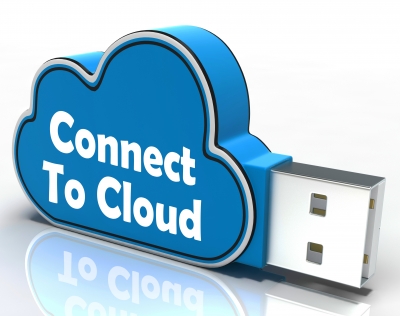
How cloud computing is changing network monitoring
 More and more enterprises are increasingly adopting and relying on cloud services and tools with great success. But adopting cloud tools and services can introduce changes enterprise leaders and IT teams may not see coming. One example is how cloud adoption can change how you monitor and manage your network.
More and more enterprises are increasingly adopting and relying on cloud services and tools with great success. But adopting cloud tools and services can introduce changes enterprise leaders and IT teams may not see coming. One example is how cloud adoption can change how you monitor and manage your network.
Generally, cloud adoption often adds a level of complexity to network monitoring because moving applications out of the internal data center influences how network administrators track performance, latency, and other key details. On the other hand, cloud computing can also benefit network monitoring.
So let’s see how becoming more reliant on the cloud is changing “the network” classical meaning and how network monitoring is an imperative step when moving to the cloud.
Traditional network monitoring vs. cloud network monitoring
Network monitoring is an important instrument to assure the performance and availability of our servers and our entire network. However, cloud computing forces us to change our traditional approach to application and network management. No longer do we have a fixed number of assets that must remain running 100% of the time, and performing to the best of their abilities. Instead, we have on-demand computing where resource needs and capacity vary based on demand.
In a traditional network implementation, network and application monitoring primarily focuses on the availability and performance of the network and server infrastructure. Monitoring of network devices (routers, switches and firewalls) is usually accomplished with a network management system (NMS) that uses traditional protocols such as SNMP, ICMP, and WMI to gather performance statistics. Advanced management systems typically include network device discovery and mapping, network device performance monitoring, real-time intelligent alerting and reporting, application monitoring and many more features that assist the IT expert in monitoring and managing the performance of their network.
Once a cloud network is introduced, additional significant extensions are added: the performance of your ISP (WAN performance) and the performance of your cloud provider (and their ISP). Since your WAN link is the essence between you and your cloud provider, it is imperative that you monitor its performance. However, it’s not enough to simply monitor WAN performance; you also need to understand your network traffic. In order to assess the impact on the performance of business critical apps and services, you need to know who is using your network traffic, how much they are using, and what they are using it for.
Basically, the focus of network monitoring in a cloud environment shifts away from managing infrastructure to managing service availability and performance. So, one of the big benefits of cloud computing is not only outsourcing the provision of a scalable, enterprise grade network, but also the necessity to monitor and manage it as well.
Elements of effective network monitoring in the cloud
Effective monitoring should provide a synthetic outlook of the cloud, involving all the variables affecting the quality of service and other requirements. So, here are 4 key features that an effective network monitoring system needs to include:
- Scalability – because of the large number of parameters that need to be monitored around a vast number of resources
- Elasticity – in order to confront dynamic changes of all the monitored entities, especially in terms of the expansion and contraction of networks, as virtual resources are created or removed
- Adaptability – to handle varying computational and network loads without impeding any activity
- Autonomy –the system needs to self-manage its distributed resources by automatically reacting to unpredictable changes.
Network monitoring is essential for companies of any size. The right monitoring tool ensures that you are notified when outages occur, constant network monitoring makes it quicker to solve problems because the monitoring solution will indicate clearly which device is causing the failure, reducing the time it takes to identify and address the problem.
There are many great technologies that allow you to monitor your resources, NETSCOUT, a company that offers several monitoring solutions and has made a few interesting acquisitions this year, one of them being Fluke Networks, together they have the tools that allow a company to monitor across all of their environments.
It’s your turn now. Are you properly monitoring your network in the cloud? Share your thoughts in the comments.
Photo source: http://www.freedigitalphotos.net/





Pingback: Why Universities Should Switch to Cloud Monitoring – Virtual University
Pingback: Why Universities Should Switch to Cloud Monitoring • Cloud Ethernet